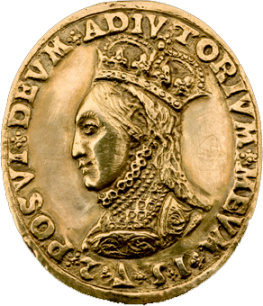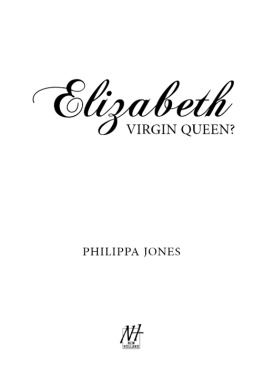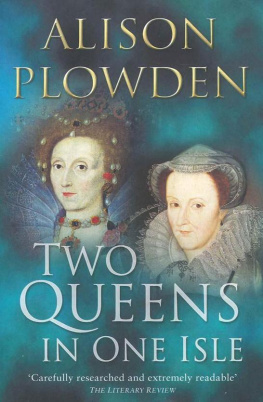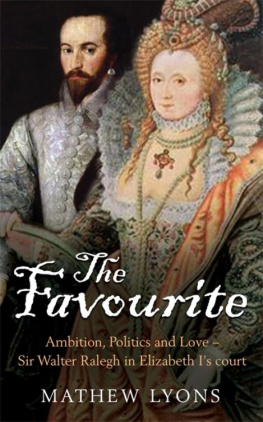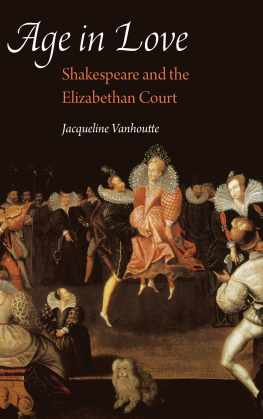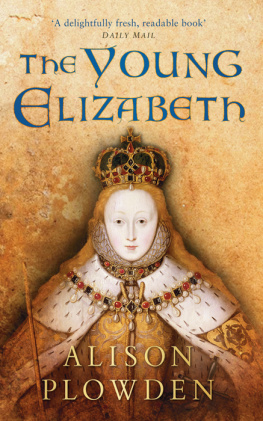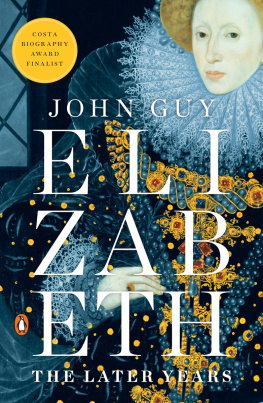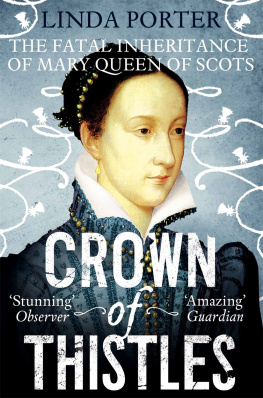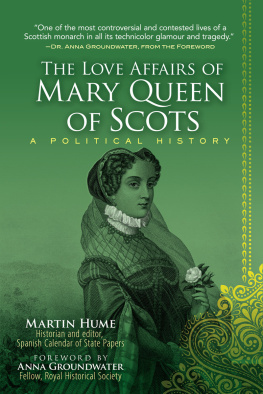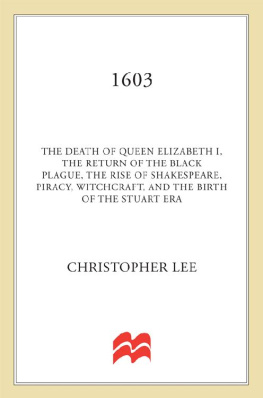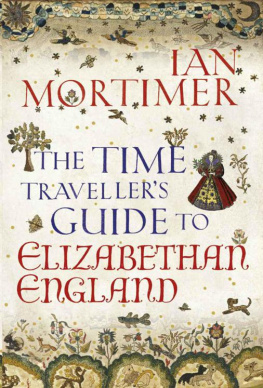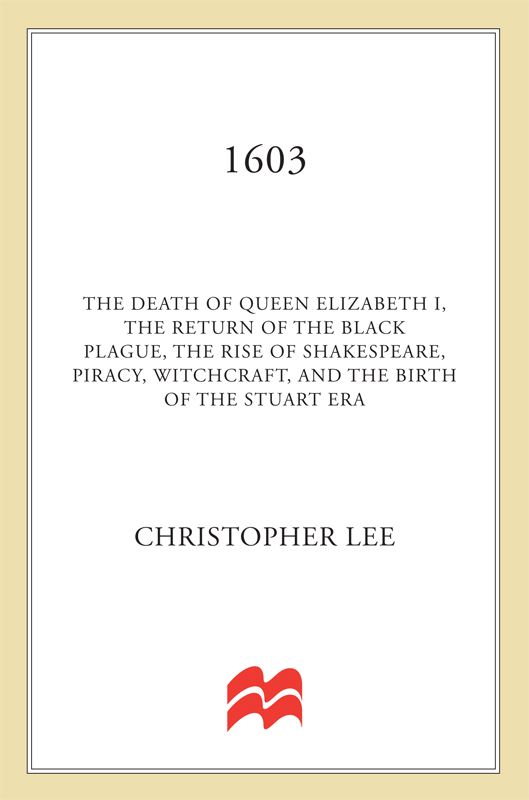
The author and publisher have provided this e-book to you for your personal use only. You may not make this e-book publicly available in any way. Copyright infringement is against the law. If you believe the copy of this e-book you are reading infringes on the authors copyright, please notify the publisher at: us.macmillanusa.com/piracy.
Contents
For Charlie
AUTHORS NOTE
Dates are not always when they seem to be. Until 1752 the dating of years in England was not as we understand it today. New Years Day was 25 March. So, in 1603 it was still the rule to date the year not from 1 January, but from Lady Day: 25 March. Therefore, in Elizabethan dating, January, February and much of March would still be in what we think of as the previous year. We would say that Elizabeth I died on 24 March 1603, whereas Tudor dating would have it as 24 March, the final day of 1602. Thus we have to remember this dating difference often noted by the words Old Style (or O.S.) or New Style (or N.S.) after ambiguous dates when drawing together some of the records of the first three months of 1603 because they are generally dated 1602 in England.
In the text where I am quoting from primary sources I have, as far as possible, kept to the original, unless a direct transcription would be confusing to follow. Therefore, to some not used to Elizabethan script, the spellings may seem odd. I have transcribed the original in many places simply to let everyone see how words were used and spelled. I think this is fun as well as historically interesting. We do not change Shakespeares text, because with a little listening it is clear unlike, say, an earlier writer such as Chaucer who can be confusing in his form of language. So to read late sixteenth- and early seventeenth-century texts more or less as they were written lets us into the atmosphere of the period whereas a modern English version does not always do so. For example, in Elizabethan English we do not find apostrophes. Thus, Elizabeths is written as Elizabeths. Many words end in ie, which vowels were later dropped: Majesty is written Majestie. Others seem to be obvious spelling mistakes, but are not. For example be is bee and qu is sometimes seen in northern orthography where we would expect a w. Where we would split into two words, in 1603 one was sufficient: for example, we would write as well, but an early seventeenth-century document might read aswell. Enthusiasts for Ye Olde Tea Shoppe will feel at home.
By using the original text, we can also spot word and spelling origins. Our modern word only is in fact one-ly. Than could be written as then; so we find, The pestilence is nothing else then a rotten fever. I wonder if we hear the word spoken in an accent that we recognise and, if so, then begin to have an idea of what people sounded like when they spoke. It makes sense when laid out but has no academic importance. After all, if we took it to modern extremes of, say, perceptions of Sloane accents, then we might hear a rock band described as Railing Staines. The principle of reading how people, or some people, spoke is not dissimilar. Also, it gives those who moan about the fashion for using American spellings in England something to think about when they see that an American dictionary would have a lot in common with a Tudor or early Stuart lexicon. For example, honour in our English is honor in modern American English and in Tudor English. We also find differences in transliteration. A West Country dialect would not be written necessarily in a common form with, say, a Court dialect. Certainly it was the case with the letters between James and Elizabeth that we see, for want of better terms, the Scottish and English spellings. This should not be surprising; James was writing in Scotch, a dialect that was, in some cases, a different form. A linguistician might tell us if this was the reason that James seemed an accomplished poet in Scottish as well as Latin, but found certain difficulty in writing as competently in English.
There is a further difference in the scripts of these primary sources; we should not neglect mistakes. Because a document is preserved in some modern academic form and environment does not mean that a word might not be misspelled. Indeed, a document may have two or even three spellings of the same word. The obvious example would be that hart (the animal) appears ten lines down as harte and even as heart (the organ). A simple uncorrected mistake and nothing more. At the same time, it is true that style was fast changing and fashion compelling. A writer in, say, 1598 may indeed use a variation of the same word by 1603. Just think today how many new words appear in our vocabulary and even spellings as anyone who has grumbled over Frying Tonite signs would confirm. Most of all, towards the end of a long document, the inclination to alter and correct was tempered. Preparing even a Royal Proclamation, never mind a pamphlet, could be a difficult task often without wise and learned copy-editors in sight. Also, clerks were instructed in a style of handwriting and sometimes spelling peculiar to their departments. Considering the gulf between early seventeenth-century printers and modern high-tech newspaper processes complete with spell-checkers and the ability to cut and paste corrections, it may just be that the scribes, editors and printers of 1603 set a standard which many twenty-first-century practitioners have not much bettered.
Many have made this book a pleasure to write. Andrew Parsons presented me with a chronology of and references for major events of the year; the staffs of many libraries and archives throughout the British Isles were always keen to find the smallest item; day after day, working in the Rare Books and Music Reading Room of the British Library confirmed to me what a tremendous bunch of people are behind that long L-shaped desk ever helpful and cheerful, particularly patient. Jennifer Speake copy-edited the manuscript with enormous tact and learning, and the book is better for her questioning. Celia Kent combined humour, patience and firmness as good editors do. Finally who could do without a Mary Shoesmith? I had the original, who typed, retyped and typed again, and who was so pleased when the computers spell-check gave up under the weight of Tudor spellings and she could assume complete command and control of the desk-top. With all this enthusiasm, it would be surprising to find any error or wrong interpretation with such a team behind one. If there are mistakes, we all know whom to blame.
PANORAMA
This is the story of the year 1603. It is therefore the tale of one of the great step changes in the history of these islands. Noted historians, for example G. R. Elton, thought 1603 unimportant. Yet the events of any twelve-month period are rarely unimportant, although it is true that there are not that many dates that should stand out in our minds. One certainly is 1066 and the Norman invasion. Another might be 1642, the year which was the beginning of a terribly sad period in our island history, a period which as children we thought a great adventure when, rather like Cowboys and Indians, we chose sides to play Roundheads and Cavaliers. Yet another date might be 1688, the moment when the aristocracy caused the overthrow of the monarch, James II, and replaced him with his son-in-law and daughter, William of Orange and his queen, Mary. From that moment there would be no question that the English monarchy should be Protestant until such time as religion no longer mattered, a point still not fully reached. Others might choose 1805 when the Battle of Trafalgar made certain Britannia could rule the waves for more than a century. Or 1815 and the Battle of Waterloo, which finally did for Napoleon and brought about a sort of peace throughout Europe, especially in these islands, for ninety-nine years. Finally, the modern historian might remind us of 1940, the so-called dark days when the skills and bravery of a few prevented a German invasion of the United Kingdom. Each of these dates might well be remembered. Then why 1603? Could the Eltons be right? I think not. Transition from one dynasty to another should not go unremarked.


